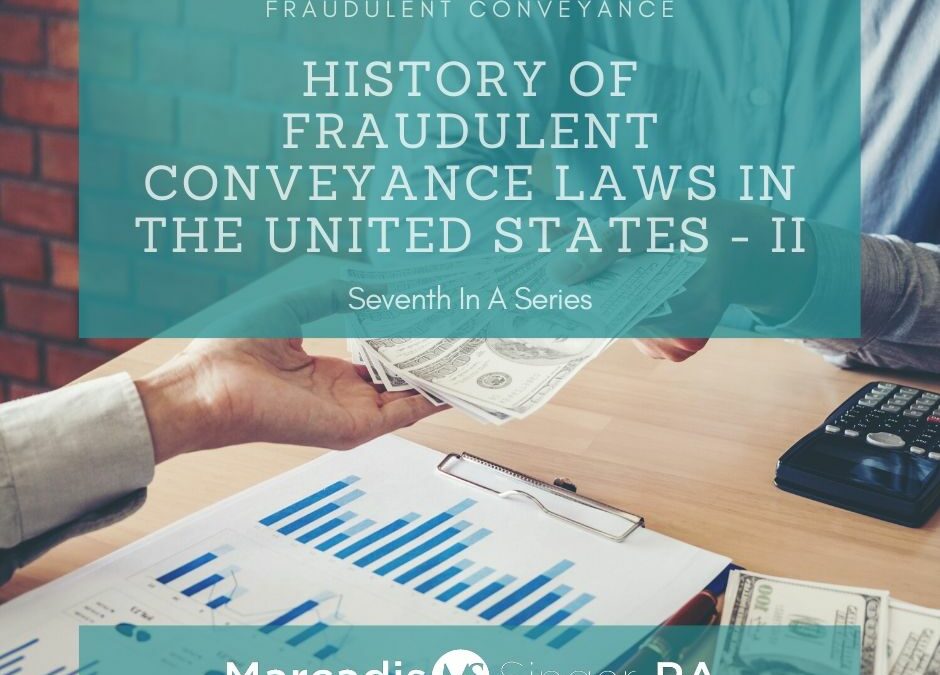History of Fraudulent Conveyance Laws in the United States
Part 2
Unfortunately, unless the parents can pay the trustee the greater of the equity in the home or the sum of their debts (either directly to the Chapter 7 trustee or in payments to a Chapter 13 trustee), the trustee will sell their home to pay off the creditors. Frequently, the parents would have had the ability to exempt the home and maintain ownership despite personal bankruptcy if they had actually retained title or had recuperated title before filing Bankruptcy.
Even good-faith buyers of property who are the recipients of fraudulent transfers are only partially protected by the law in the U.S. Under the Bankruptcy Code; they get to keep the transfer to the degree of the value they paid for it, which suggests that they might lose much of the benefit of their deal even though they have no knowledge that the transfer was fraudulent.
Although fraudulent conveyance law initially evolved in the context of a relatively easy agrarian economy, it is now commonly utilized to challenge intricate modern-day financial transactions such as leveraged buyouts (LBOs).
Frequently, fraudulent transfers occur in connection with leveraged buyouts, where the management/owners of a failing corporation will trigger the corporation to borrow on its properties and utilize the loan proceeds to buy the management/owner’s stock at highly inflated rates. The creditors of the corporation will then typically have little or no unencumbered possessions left upon which to collect their debts. LBOs can be constructive or intentional/actual fraudulent transfers, or both, depending upon how obviously the corporation is economically impaired when the deal is finished.
Not all LBOs are fraudulent transfers. However, a red flag is raised when, after an LBO, the company then cannot pay its financial obligations.
Overall, fraudulent transfer liability will frequently turn on the financial condition of the debtor at a specific point in the past. This analysis has historically required “conflicting” expert testimony from both plaintiffs and accused, which often resulted in costly court proceedings and inconsistent results. U.S. courts and scholars have just recently developed market-based approaches to try to simplify the analysis of constructive fraud, and judges are increasingly focusing on these market-based measures.
